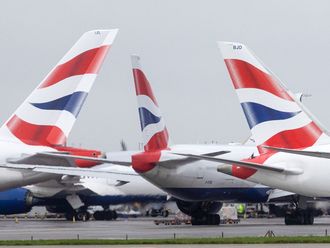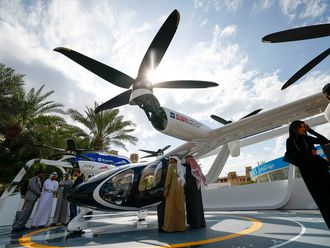New York: Pratt & Whitney is working to preserve profit margins as it gears up production of a highly efficient new jet engine for planes such as the Airbus A320neo, coming out next year, the company’s president said.
Pratt hopes the new engine, known as the Geared Turbofan or GTF, will help cement its comeback in the cut-throat market for powering jetliners. But engine sales tend to generate slim profit margins at the front end, which could squeeze profits at Pratt and its parent United Technologies Corp.
So Pratt has been attacking costs before it boosts production to “try and get some improvement in... return on sales,” Paul Adams said in an interview with Reuters.
Pratt posted an operating profit margin of 12.8 per cent last year, and Adams said it should rise about 1 percentage point this year, which would put it at roughly 13.8 per cent.
The engine maker will try to maintain that level, which still likely will trail other United Tech units selling elevators, climate control systems and other aerospace parts.
Pratt, which employs 31,500 people, cut 5 per cent of workforce last year, excluding divestitures. It is using volume purchasing to get lower prices from suppliers and investing in manufacturing technology to lower costs, Adams said.
Pratt also is counting on rising service revenue from its older V2500 engine, used on current A320 planes, to support margins. Like companies that sell razors and profit on blade replacements, Pratt and its rivals sell engines relatively cheaply, and count on reaping bigger profits on service when the engines need repair or overhaul.
Planes equipped with V2500s are about eight years old, on average, and are “entering the higher value portion of [the] aftermarket,” Adams said. Service revenue will “bridge between the delivery of the GTFs and when the GTF aftermarket comes through,” he said, which is expected toward the end of the decade.
Last year, Pratt’s $14.5 billion (Dh53.2 billion) in sales contributed nearly a quarter of United Tech’s revenue. Adams expects Pratt’s revenue to double over the next decade.
The GTF is revitalising Pratt’s commercial jet business and stands to support the company long-term by expanding its installed base of engines, which can last 25 years or more.
Pratt has 5,500 GTF orders from Airbus and other manufacturers such as Bombardier. It expects to more than double production of large engines in five years, including engines for the military’s F-35 Joint Strike Fighter programme.
Ernest Arvai, an aviation industry consultant with AirInsight, estimates commercial engine makers, which include Pratt, General Electric Co and Rolls-Royce Holding Plc , make 5 per cent on sales of engines, potentially less if they compete for a single airframe.
Service revenue margins run at an estimated 15 per cent to 20 per cent, Arvai said.
Adams declined to comment on margins it earns on engine sales. “But it is a challenging business case on the delivery of a new engine in the commercial engine business,” he said.












